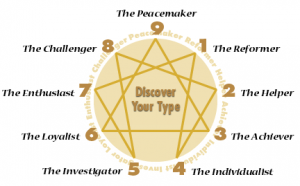 While I’m a firm believer in personality profiles and assessments, it is hard for one evaluation tool to gather the total scope of human beings.
While I’m a firm believer in personality profiles and assessments, it is hard for one evaluation tool to gather the total scope of human beings.
I’ve discovered that a combination of varied assessments provide a more accurate look at who we are, how we work, and how we react.
Here are the assessment tools I have found work well together to provide a great look at a person and how that person will work on a team. I believe in them so much, I would not hire a team member until I could look at their personality profiles.
DISC — is a quadrant behavioral model based on the work of Dr. William Moulton Marston (1893–1947) to examine the behavior of individuals in their environment or within a specific situation (otherwise known as environment). It therefore focuses on the styles and preferences of such behavior.
This system of dimensions of observable behavior has become known as the universal language of behavior. Research has found that characteristics of behavior can be grouped into these four major “personality styles” and they tend to exhibit specific characteristics common to that particular style. All individuals possess all four, but what differs from one to another is the extent of each.
Having understood the differences between these blends makes it possible to integrate individual team members with less troubleshooting. In a typical team, there are varying degrees of compatibility, not just toward tasks but interpersonal relationships as well. However, when they are identified, energy can be spent on refining the results.
Each of these types has its own unique value to the team, ideal environment, general characteristics, what the individual is motivated by, and value to team.
Enneagram — can be seen as a set of nine distinct personality types, with each number on the Enneagram denoting one type. It is common to find a little of yourself in all nine of the types, although one of them should stand out as being closest to yourself. This is your basic personality type.
The nine personality types (also called “enneatypes”), which are also indicated by the points of a geometric figure, called an enneagram, which also indicate some of the connections between the types. As there are different schools of thought among Enneagram theorists about some aspects of how it is understood, its interpretation is not always unified or consistent.
Meyers-Briggs — The purpose of the Myers-Briggs Type Indicator® (MBTI®) personality inventory is to make the theory of psychological types described by C. G. Jung understandable and useful in people’s lives. The essence of the theory is that much seemingly random variation in the behavior is actually quite orderly and consistent, being due to basic differences in the ways individuals prefer to use their perception and judgment.
“Perception involves all the ways of becoming aware of things, people, happenings, or ideas. Judgment involves all the ways of coming to conclusions about what has been perceived. If people differ systematically in what they perceive and in how they reach conclusions, then it is only reasonable for them to differ correspondingly in their interests, reactions, values, motivations, and skills.”
StrengthsFinders—The Clifton StrengthsFinder is the culmination of more than 50 years of Dr. Donald O. Clifton’s lifelong work: leading millions of people around the world to discover their strengths. In 2002, Dr. Clifton was honored by an American Psychological Association Presidential Commendation as the Father of Strengths-Based Psychology.
To help people uncover their talents, Gallup introduced the first version of its online assessment, StrengthsFinder, in the 2001 management book Now, Discover Your Strengths. The book spent more than five years on the bestseller lists and ignited a global conversation, while StrengthsFinder helped millions to discover their top five talents.
In StrengthsFinder 2.0 Gallup unveiled the new and improved version of its popular assessment, language of 34 themes, and much more. While you can read this book in one sitting, you’ll use it as a reference for decades.
Combining the nuances of these four tools results in an amazing look at a person.
Question: Have you utilized one or more of these assessments? What do you think?
If this post was helpful, please share it by clicking one of the buttons below.
Leave a Reply to Melissa Cancel reply